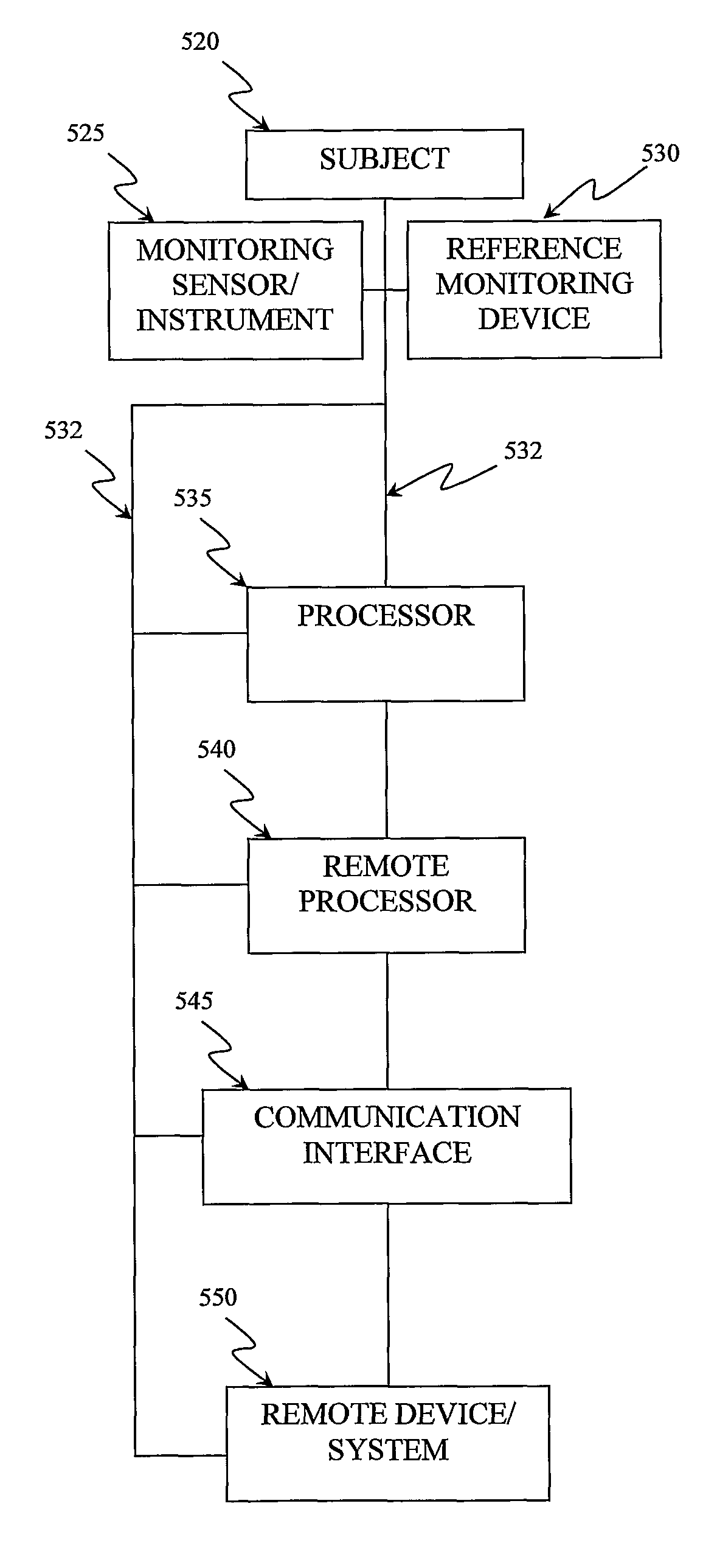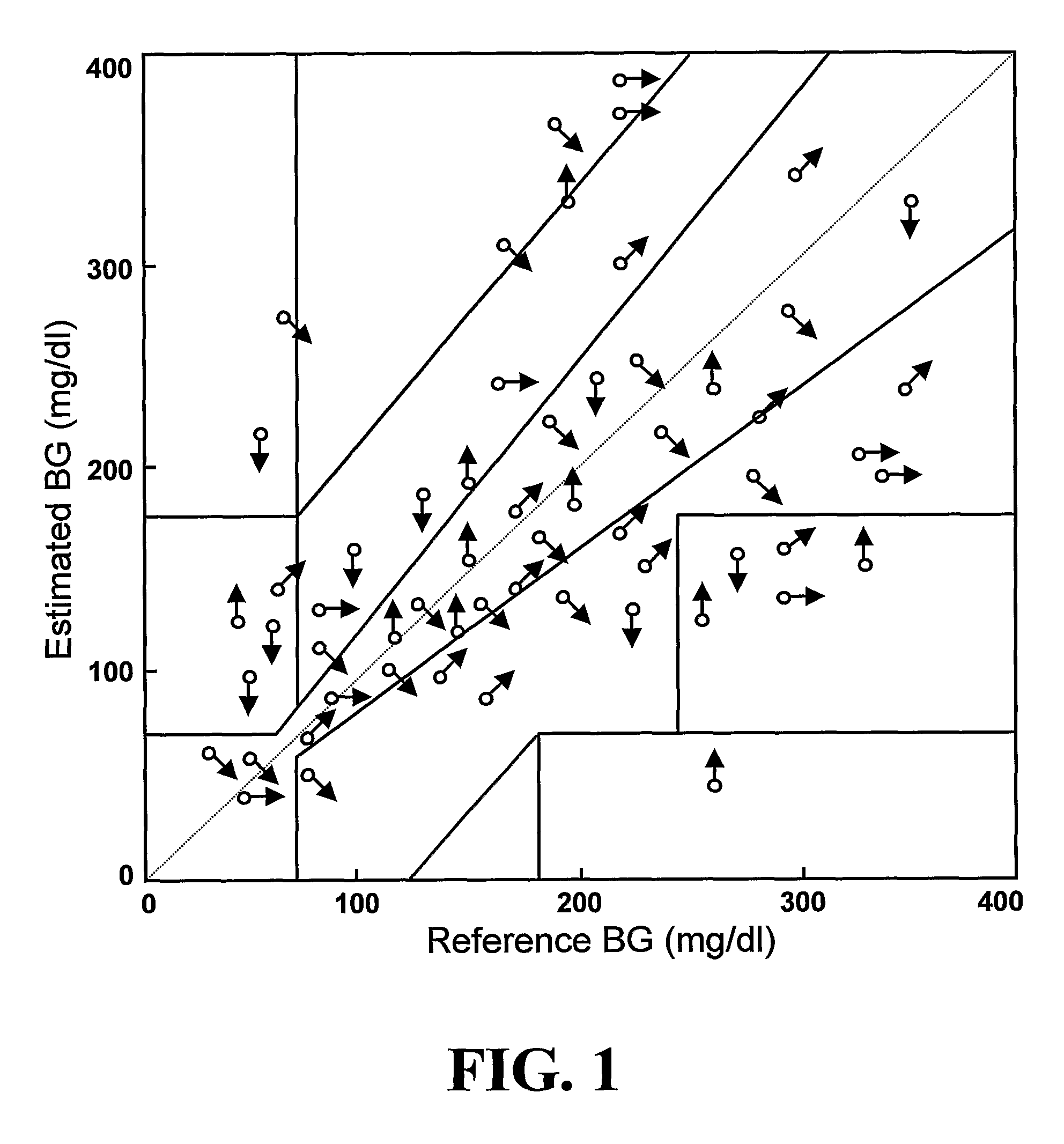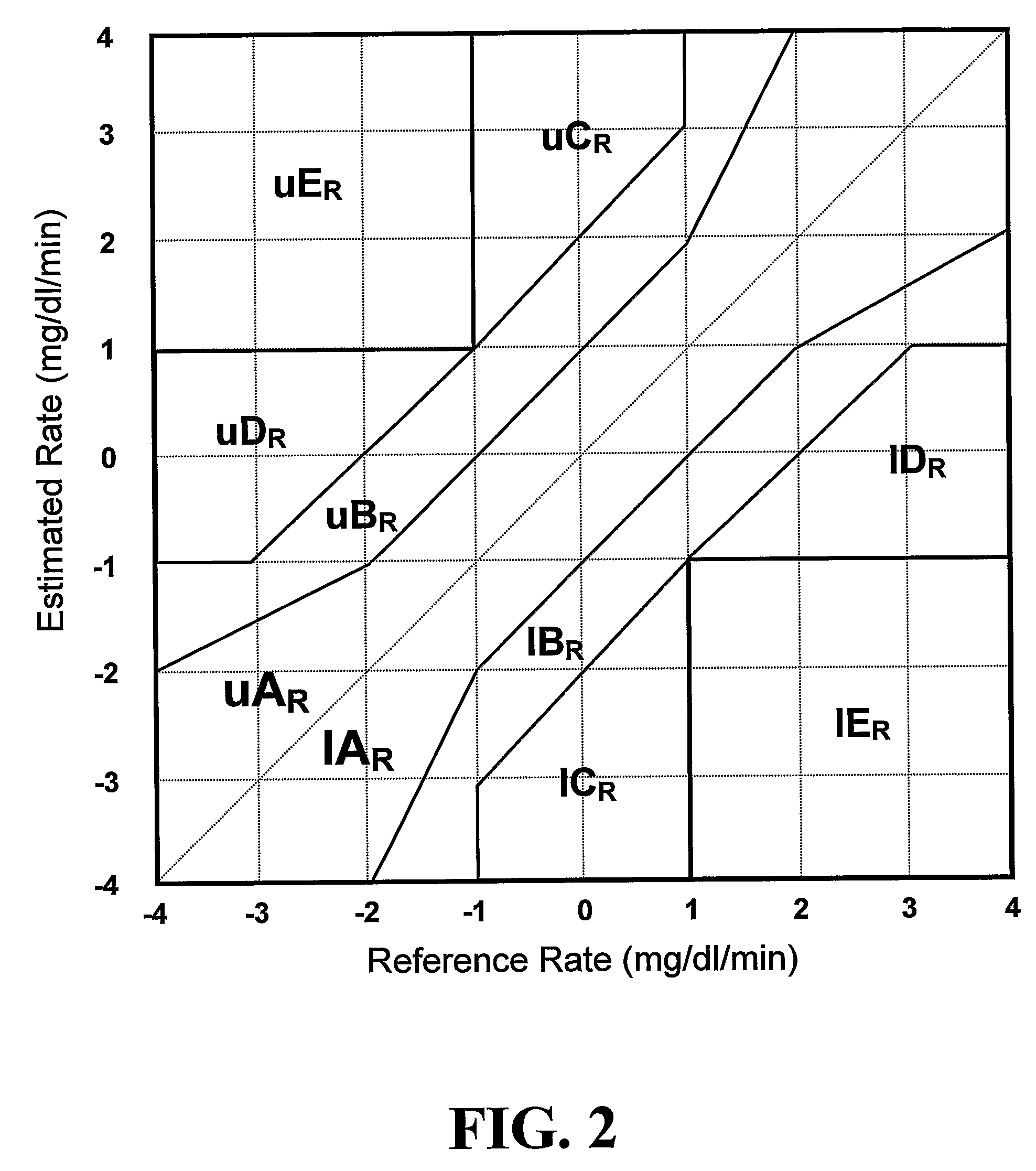Method, system and computer program product for evaluating the accuracy of blood glucose monitoring sensors/devices
a technology of glucose monitoring and accuracy, applied in the field of system for evaluating the accuracy of glucose monitoring sensors or instruments, can solve the problems of difficult evaluation of the accuracy of cgs, difficult to apply these measures to evaluate the process approximation offered by cgs, and patients who experience disturbing symptoms
- Summary
- Abstract
- Description
- Claims
- Application Information
AI Technical Summary
Benefits of technology
Problems solved by technology
Method used
Image
Examples
Embodiment Construction
[0025]BG fluctuations are a continuous process in time BG(t), and each point of that process is characterized by its location, speed, and direction of change. In other words, at any point in time BG(t) is a vector with a specific bearing. Turning to FIG. 1, FIG. 1 presents such vectors depicted over the grid of the traditional EGA. The exemplary vectors are illustrated on the grid with circles having arrow heads.
[0026]CGS allows monitoring this process in short (e.g. 5-min) increments, in essence producing a parallel discrete time series that approximates BG(t). It should be appreciated that the increments may be any desired or required time period, interval or frequency. The periods may be equivalent or varied. Thus, CG-EGA has to judge the precision of this process approximation in terms of both accuracy of BG readings, and accuracy of evaluation of the direction of BG change. Consequently, a Point Error-Grid Analysis (P-EGA) and Rate Error-Grid Analysis (R-EGA) is introduced that...
PUM
| Property | Measurement | Unit |
|---|---|---|
| length | aaaaa | aaaaa |
| weights | aaaaa | aaaaa |
| physical | aaaaa | aaaaa |
Abstract
Description
Claims
Application Information
 Login to View More
Login to View More - R&D
- Intellectual Property
- Life Sciences
- Materials
- Tech Scout
- Unparalleled Data Quality
- Higher Quality Content
- 60% Fewer Hallucinations
Browse by: Latest US Patents, China's latest patents, Technical Efficacy Thesaurus, Application Domain, Technology Topic, Popular Technical Reports.
© 2025 PatSnap. All rights reserved.Legal|Privacy policy|Modern Slavery Act Transparency Statement|Sitemap|About US| Contact US: help@patsnap.com



